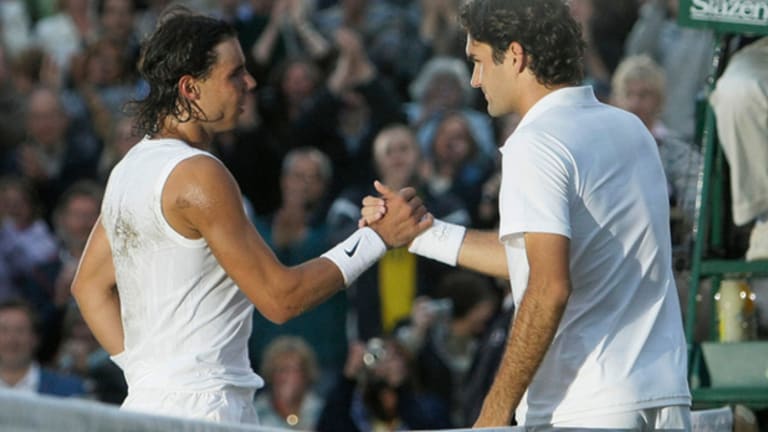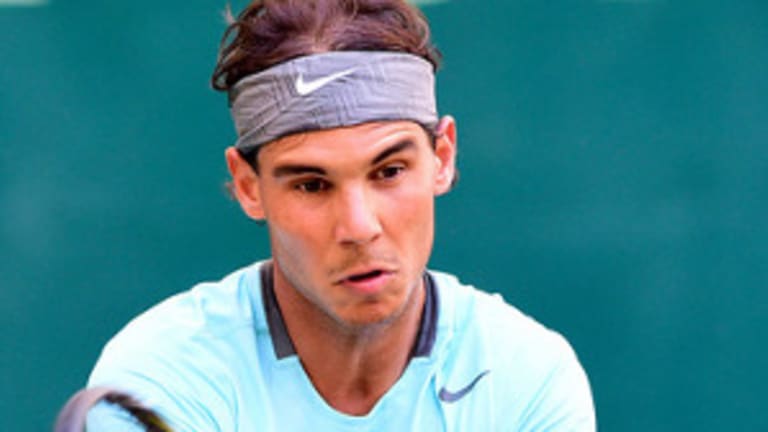One of the least surprising upsets in tennis history occurred in Halle last week, when top-seeded Rafael Nadal lost his opener to Dustin Brown, 6-4, 6-1. No disrespect to Brown, who played a fine match, but when the score rolled in, I couldn’t help but think back to some words Nadal spoke in his post-match presser after he flummoxed Novak Djokovic in the French Open final.
“Yes, I am going to Halle tomorrow,” Nadal said when asked about his grass-court plans. “I want to try to play well again in Wimbledon.”
Nadal then cited his general fatigue, as well was the mild bout of back problems he experienced in Paris, and added these thoughts on Halle: “I really feel that I have compromised with them to go there. I missed it last year. I don't want to miss it two years in a row. . . I know probably the result will not be the perfect one there, because days of preparation are not the right ones.”
In other words, Nadal felt he owed it to the tournament to play there after having skipped it 2012—under doctor’s orders, because of chronic tendinitis in his knees. But his decision wasn’t entirely altruistic, either. Last year, without having played a grass event before Wimbledon, he was knocked out in the first round of The Championships by Steve Darcis.
That was a blow that heaped insult upon injury. For in 2012, Nadal was the victim of a stunning but entirely deserved upset crafted in Wimbledon’s second round by Lukas Rosol. Furthermore, the previous year was responsible for creating one of the most significant failures on Nadal’s resume: He not only lost the Wimbledon final to Djokovic, he also handed over the world No. 1 ranking.
You could say that Wimbledon has been mighty rough on Nadal for a few years now.



